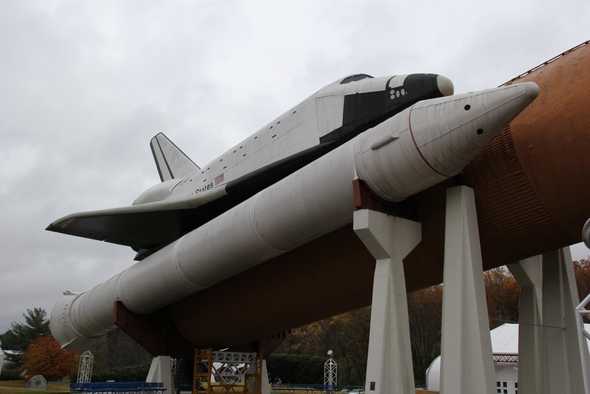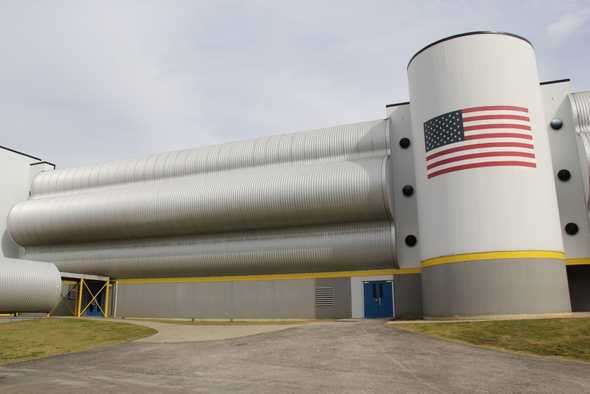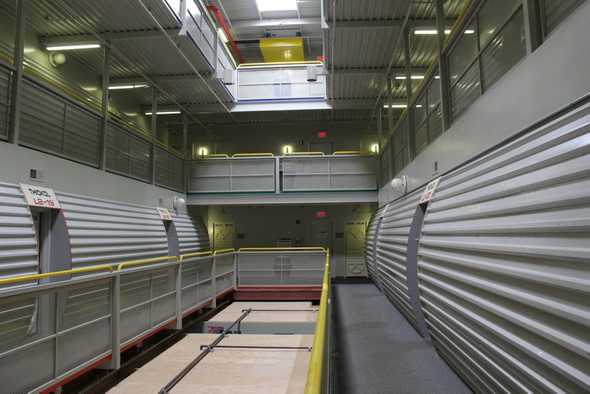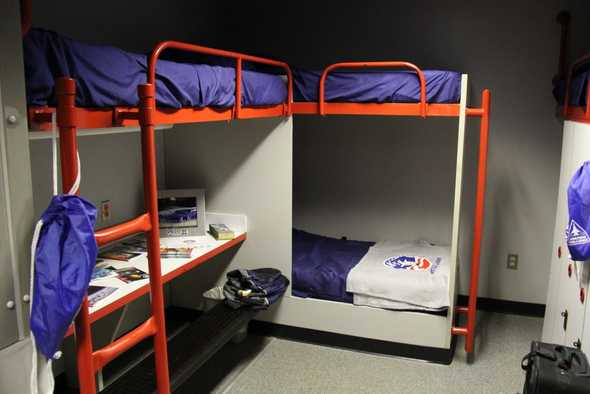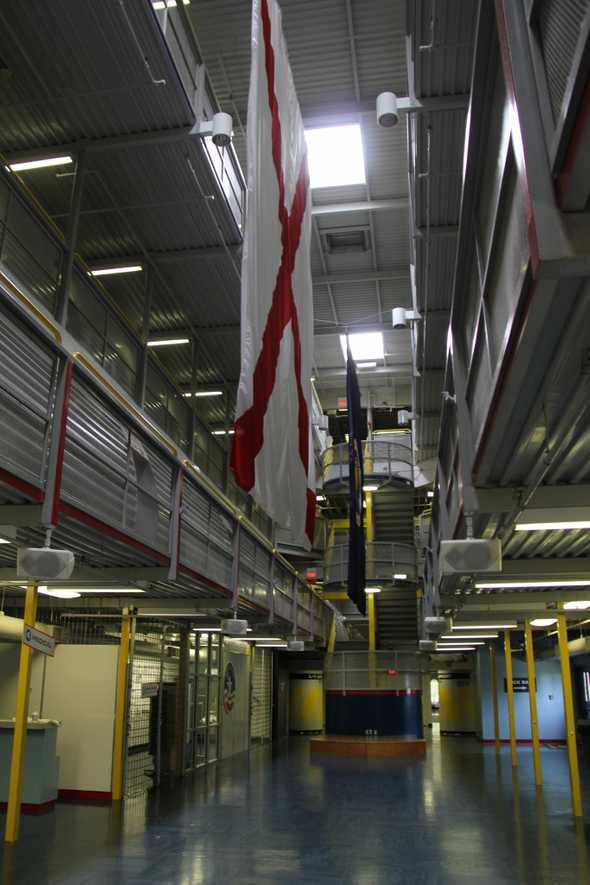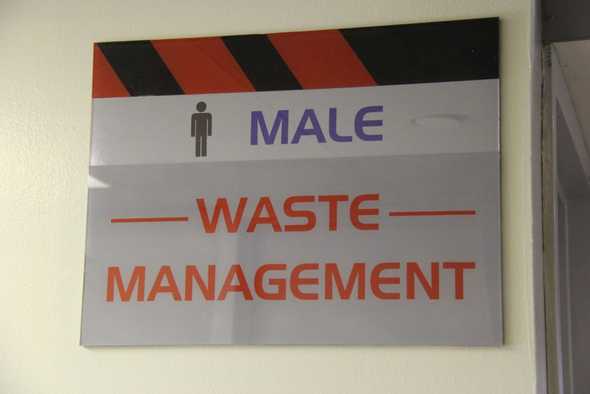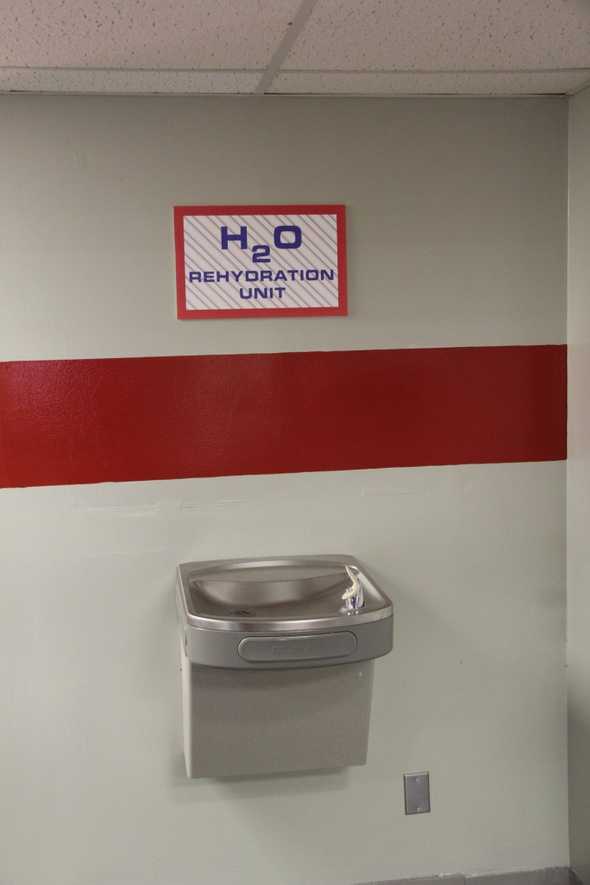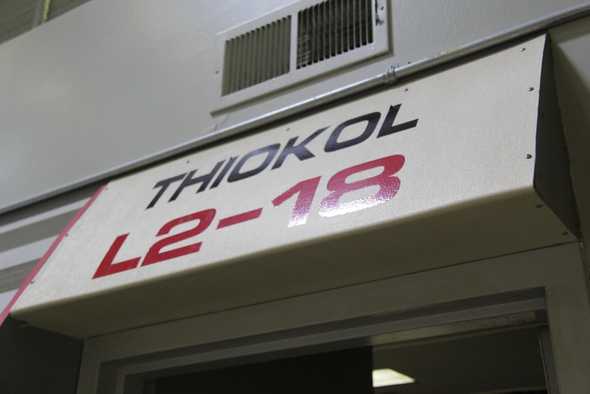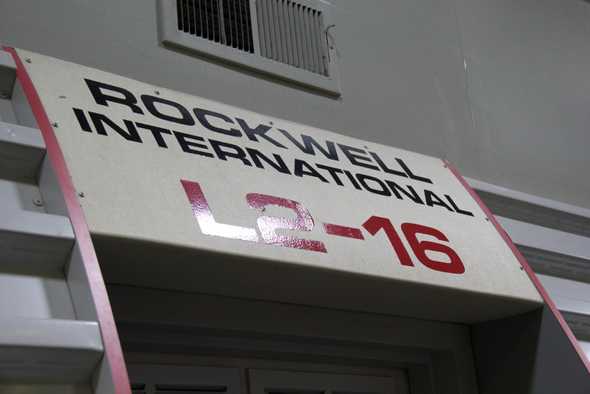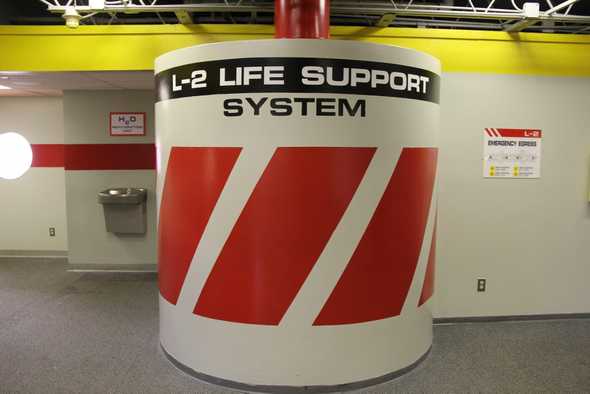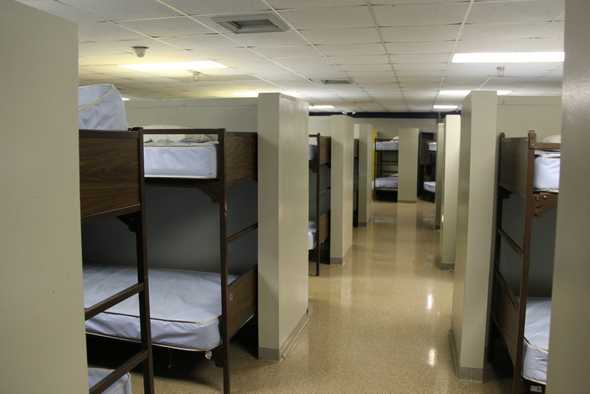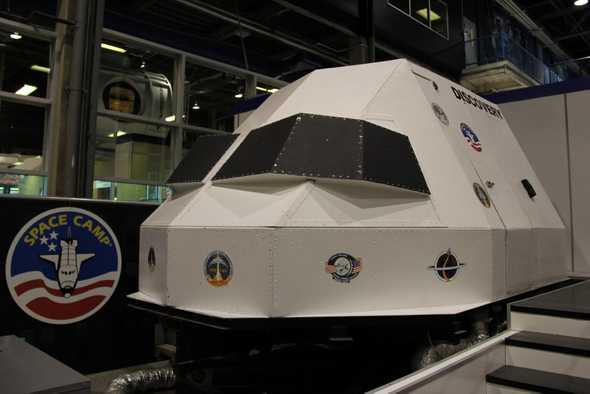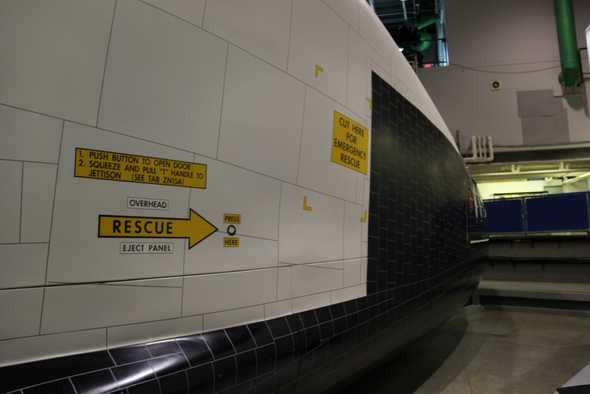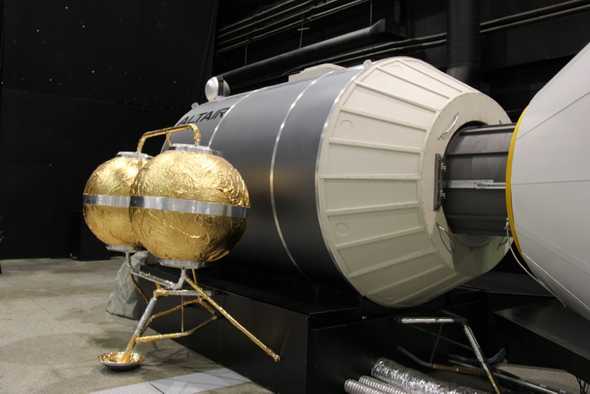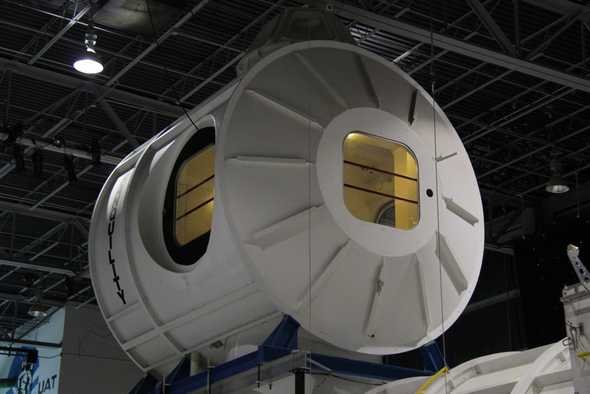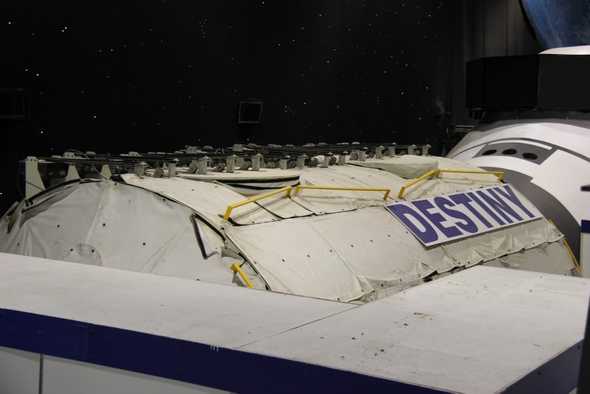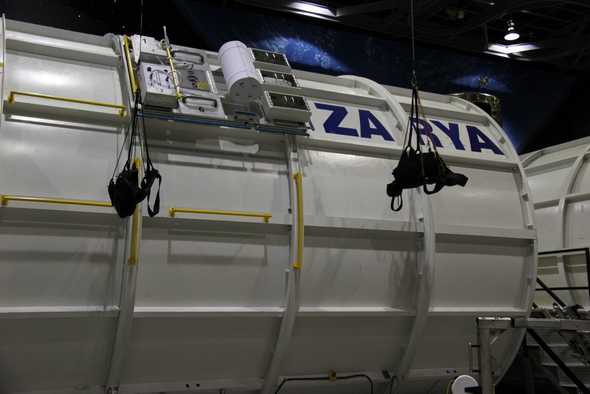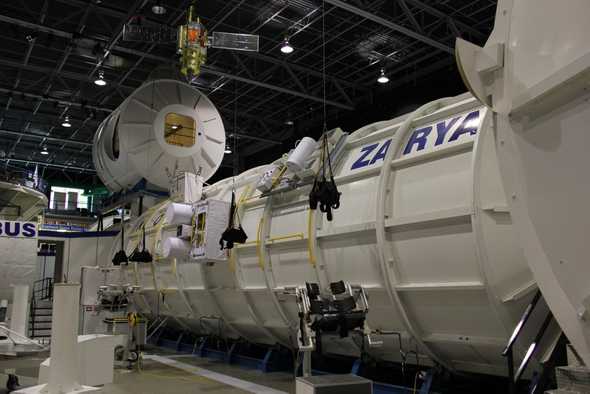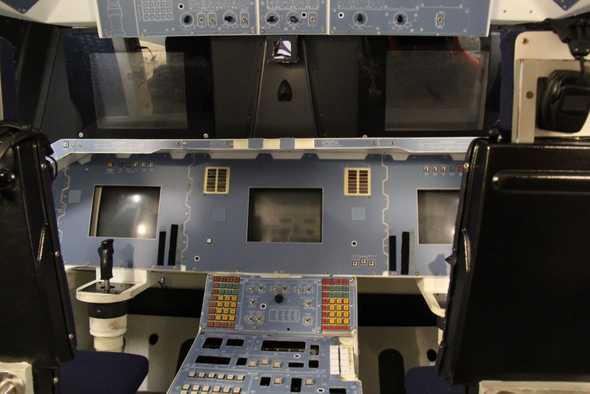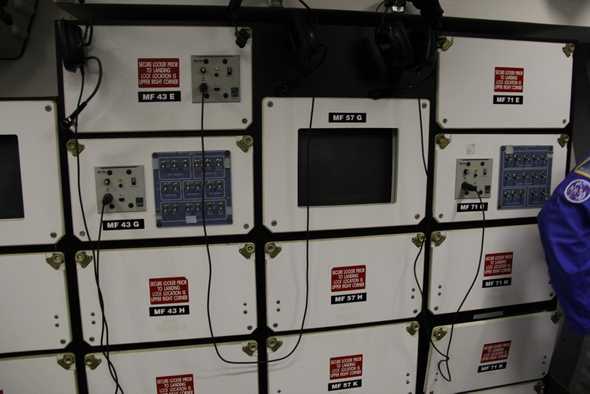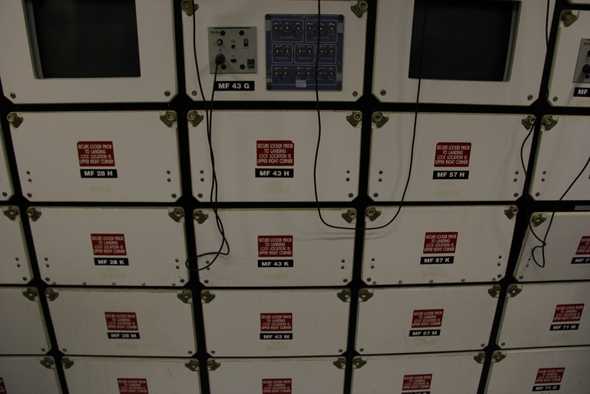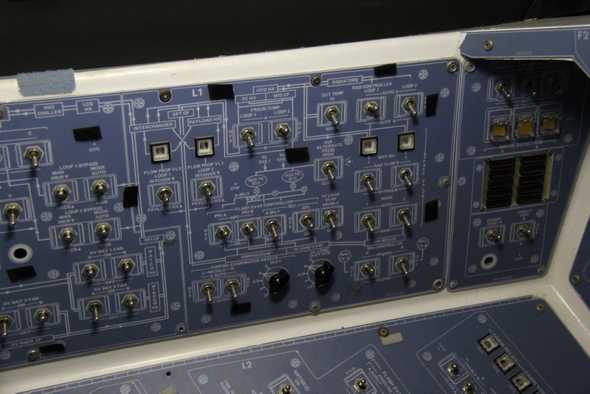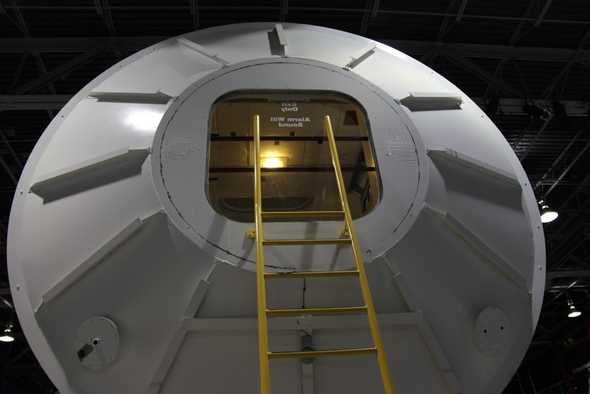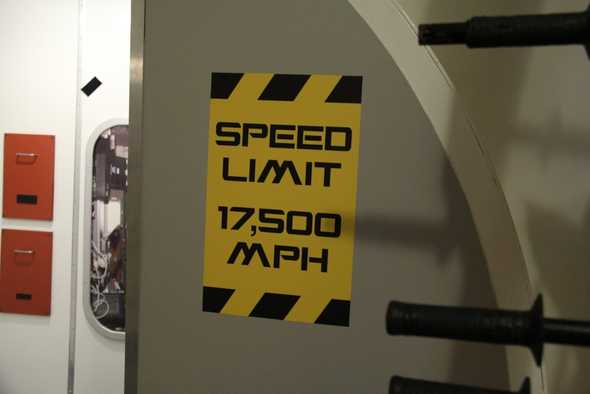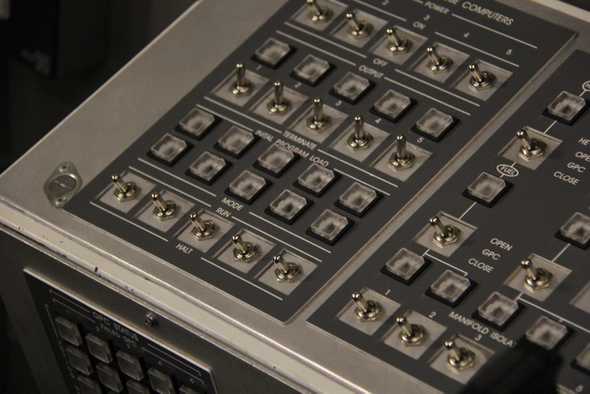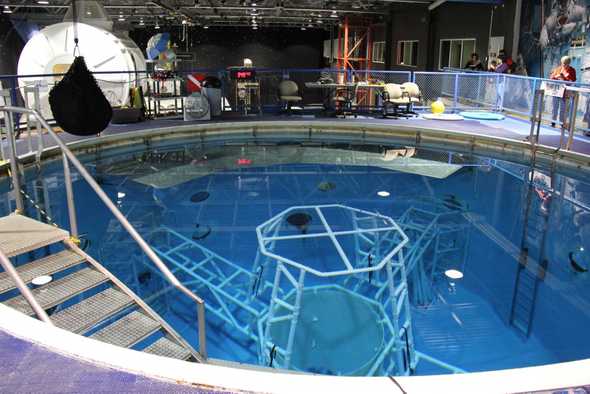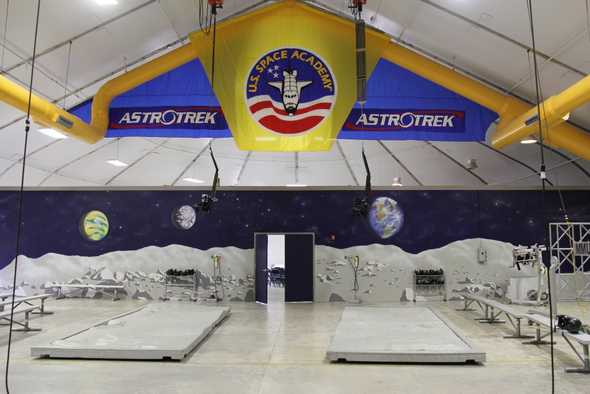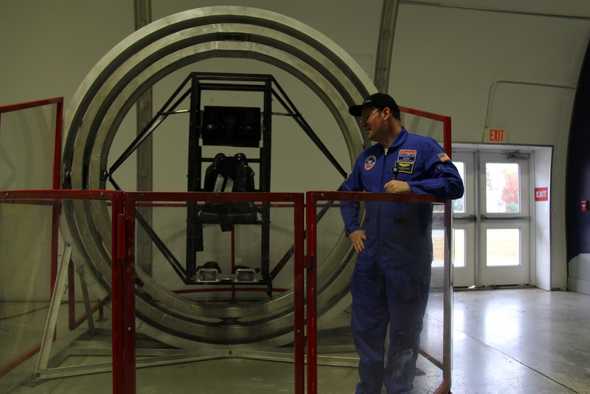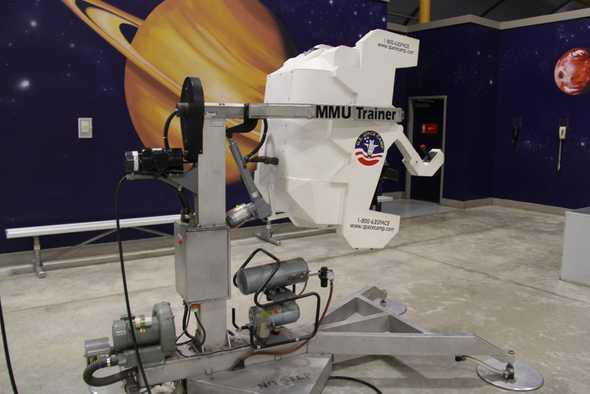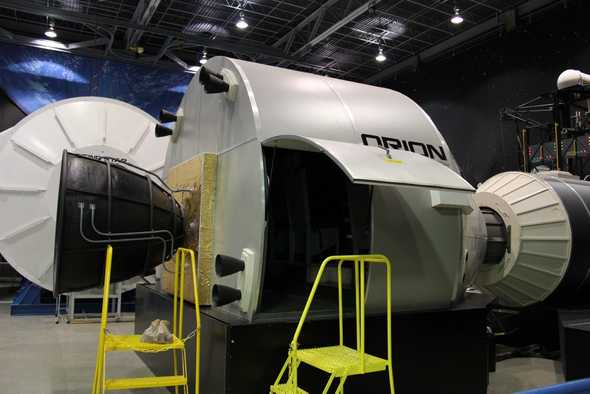Space Camp Tour
What Space Camp Tweetup can be complete without a tour of the facilities? During the MathAlive! Space Camp Tweetup, we had the opportunity to visit some fascinating places including the Habitat and the training center where Space Campers spend a majority of their time. Our tour guide, Jason, started the tour under the full shuttle stack with Space Shuttle Pathfinder sitting above the External fuel tank. When you’re standing under such a large vehicle, you start to understand what an amazing feat the Space Shuttle Program really was.
It was then off to the Habitat, a futuristic looking dorm for space nerds. The Habitat is a dorm style building that houses attendees of Space Camp. Each room contains four bunkbeds that can sleep up to eight people.
The four floors of the Habitat are usually divided by gender. Jason said the second floor is often where males sleep, and the fourth floor where females sleep. The third floor has additional beds that can be allocated to a specific gender. The first floor is where campers are welcomed and can pick up their bedding and other materials for their stay.
What is fascinating walking around the habitat are all the signs. The waste management in lame man’s terms is the restroom. The H2O rehydration unit is the water fountain. Phone home is the phone that campers can call home using. Dorm rooms have names of companies like Thiokol, Rockwell International, and BDM International. It doesn’t sound like it’s too hard to adjust to the terminology, just don’t take the emergency egress to get to the cafeteria.
There is also a second Habitat, cleverly named Habitat 2 that can sleep larger groups. Rooms in Habitat 2 are classroom sized and contain lots of bunkbeds.
After a short visit to the Habitat, we visited the training center, where many of the simulators are located. The shuttle simulators are named after the orbiters: Atlantis, Discovery, Endeavour. They have Space Station modules that are used for different activities: Tranquility, Destiny, Zarya, Columbus.
Space Campers get to simulate being mission specialists, pilots, co-pilots, astronauts, and various roles in mission control. This is where things get fun. Depending on the ages of the group, staff can run different programs and set off lights and sounds that can simulate warnings or problems on board the orbiter or space station. This can test the student and teach them valuable skills in handling a crisis methodically and calmly. These programs are preset, and can be chosen from a list.
Upstairs on the second floor is a circular tank. This tank, called the Underwater Astronaut Trainer, is used to simulate a zero-gravity environment astronauts experience once they are in orbit. Campers are tested in their ability to construct geometric shapes and other tasks as a team.
Lastly, the Multi-Axis Trainer, or MAT, is a really neat set of circular rings. Designed to simulate the disorientation one would feel in a tumble spin during reentry into the Earth’s atmosphere, the three rings turn the rider in seemingly random directions. Watching it, one may think you would instantly get motion sick. However, since the stomach of the rider remains relatively in the same spot, the rider usually doesn’t get motion sick and throw up. There are occasionally statistical outliers who deliver an unpleasant surprise. And, yes, crew members find it entertaining to hear people scream while riding the MAT.
What was my favorite part? Seeing the Habitat for sure. The outside is so futuristic that getting to see inside was fascinating. And the training center with all the simulators, including Orion, the newest to the center was cool. And what is a special visit to Space Camp without a ride on the MAT. Okay, so everything was my favorite! It’s really hard to pick just one thing at Space Camp!
Here’s a highlight reel of the tour:
